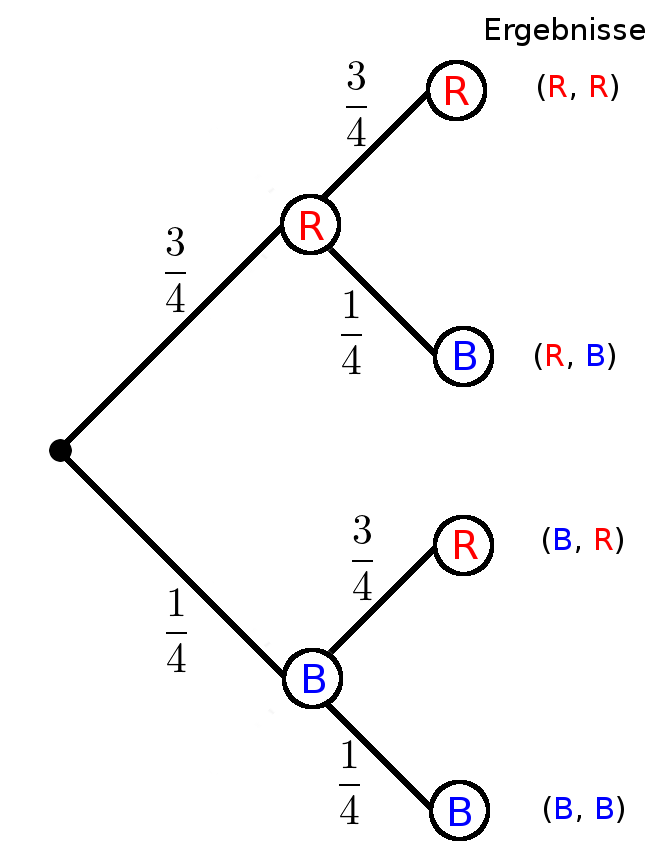Path rules
2nd path rule: Addition rule
!
Remember
The probability of an event corresponds to the sum of all associated path probabilities.
Example

Calculate the probability of red and blue regardless of the order.
Event
Repetition of sample space and event
Sample space:
$\Omega=\{(R,R);(R,B);$ $(B,R);(B,B)\}$
Event:
$E:\text{„red and blue“}$
$E=\{(R,B);(B,R)\}$Multiplication rule (1st path rule)
Calculate the probabilities of the individual outcomes
$P(R, B)=\frac34\cdot\frac14=\frac{3}{16}$
$P(B, R)=\frac14\cdot\frac34=\frac{3}{16}$Addition rule (2nd path rule)
Add up probabilities.
$P(E)$ $=P(R, B)+P(B, R)$ $=\frac{3}{16}+\frac{3}{16}$ $=\frac{6}{16}$
